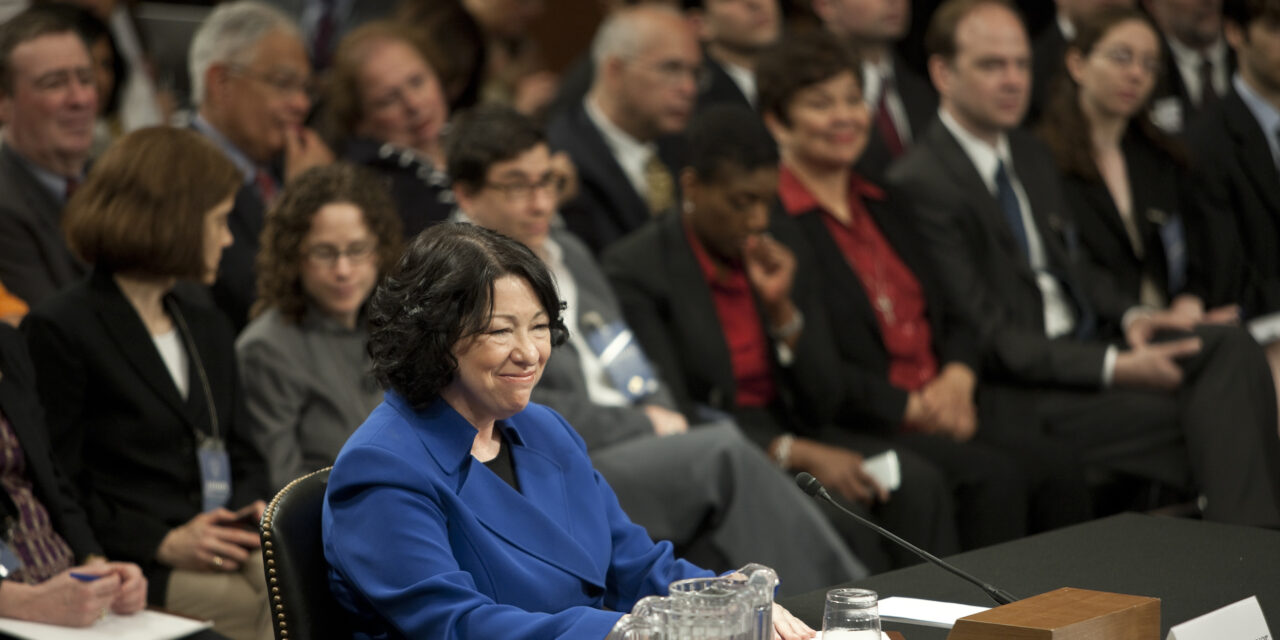When Justice Sonia Sotomayor sat before the Senate Judiciary Committee back on July 13 of 2009 to testify in her confirmation hearings, the 55-year-old judge said her philosophy from the bench was “simple.”
“Fidelity to the law,” she said. “The task of a judge is not to make the law – it is to apply the law.”
Justice Sotomayor went on to praise the United States Constitution as a document that helps make dreams come true.
Nearly fifteen years into her tenure on the High Court, the Bronx native was expressing a much different perspective this past Monday – not to mention confirming the fact that her assurances from 2009 haven’t held up too well over time.
Lecturing at the University of California’s Berkeley School of Law, Justice Sotomayor told students how she’s been handling and processing recent court decisions.
“I live in frustration,” she said. “And as you heard, every loss truly traumatizes me in my stomach and in my heart. But I have to get up the next morning and keep on fighting.”
Justice Sotomayor’s comments are revealing, and on several levels.
First, has any Supreme Court justice ever described being traumatized over differences of constitutional opinion with his or her colleagues?
Merriam Webster defines trauma as something “psychologically or emotionally stressful in a way that can lead to serious mental and emotional problems.”
Is the justice guilty of hyperbole, or has the role and environment so destabilized her that she’s teetering on such an unhealthy and dangerous state?
Second, Supreme Court justices aren’t supposed to “fight” – they’re supposed to interpret the laws and the Constitution. That Justice Sotomayor considers it her obligation to get up every morning and fight demonstrates the oversized role she feels a judge is supposed to have in society. This type of judicial activism is why so many Americans have seen their religious freedoms compromised and curtailed.
Many of the high-profile Supreme Court cases that have apparently aggrieved Justice Sotomayor have, in fact, been a matter of the justices restoring freedoms that had been previously stripped by courts who believe it’s their role to make law.
With Dobbs and the reversal of Roe, the High Court returned the issue of abortion to the states where it had previously existed. It was the 1965 Griswold decision that manufactured out of whole cloth a so-called right to privacy. The tragic 1973 Roe decision built upon it – and 60 million innocent lives later, the debate still rages.
“Change never happens on its own,” Sotomayor told the students at Berkeley on Monday. “Change happens because people care about moving the arc of the universe toward justice, and it can take time and it can take frustration.”
She’s not entirely wrong, of course.
But it’s not a Supreme Court justice’s role to amend the Constitution in order to fit their idea of justice or change. When it comes to change thru court edict, any change must be constitutional. The problem, the late Justice Antonin Scalia noted, was, “The Supreme Court of the United States has descended from the disciplined legal reasoning of John Marshall and Joseph Story to the mystical aphorisms of the fortune cookie.”
Justice Sotomayor also lamented the workload.
“And to be almost 70 years old, this isn’t what I expected,” Sotomayor said. “Cases are bigger. They’re more demanding. The number of amici are greater, and you know that our emergency calendar is so much more active. I’m tired. There used to be a time when we had a good chunk of the summer break. Not anymore. The emergency calendar is busy almost on a weekly basis.”
Is Justice Sotomayor trying to elicit sympathy for either the work or the fact she apparently must work during the summer? It might surprise the justice to know the average American receives 11 days of paid vacation per year. Meanwhile, the Supreme Court is in session 9 months out of the year, the emergency calendar notwithstanding.
Public records indicate Justice Sotomayor has spent much of her free time traveling the country and promoting her children’s books. Financial statements reveal she’s received more than $400,000 in royalties since 2019 – and a $3.1 million advance for her memoir.
Trauma is a real and dangerous emotion, but when it comes to the Supreme Court and some of their recent high-profile decisions, the only thing distressing about them would be that more of the justices don’t respect the sanctity of life and the religious freedoms so many Americans have fought and died to defend.
Image from Shutterstock.






